Myanmar, officially known as the Republic of the Union of Myanmar, is a captivating country located in Southeast Asia. Known for its stunning landscapes, rich cultural heritage, and deep-rooted traditions, Myanmar offers a unique blend of history and natural beauty. From its golden pagodas to its lush jungles, this nation has much to offer those who seek to explore its many wonders.
Table of Contents
Geography
Myanmar is strategically positioned in Southeast Asia, bordered by Bangladesh and India to the northwest, China to the northeast, Laos to the east, and Thailand to the southeast. To the south, it faces the Bay of Bengal and the Andaman Sea. The country spans a total area of approximately 676,578 square kilometers, making it the largest country in mainland Southeast Asia. Myanmar’s diverse topography includes the fertile Irrawaddy Delta, the central dry zone, and the Shan Plateau, all contributing to its rich biodiversity and stunning landscapes.
States of Myanmar
Myanmar is divided into 14 administrative regions, which are categorized into 7 states and 7 regions.
States
| No. | State | Capital |
|---|---|---|
| 1 | Kachin State | Myitkyina |
| 2 | Kayah State | Loikaw |
| 3 | Kayin State | Hpa-An |
| 4 | Chin State | Hakha |
| 5 | Mon State | Mawlamyine |
| 6 | Rakhine State | Sittwe |
| 7 | Shan State | Taunggyi |
Regions
| No. | Region | Capital |
|---|---|---|
| 1 | Ayeyarwady Region | Pathein |
| 2 | Bago Region | Bago |
| 3 | Magway Region | Magway |
| 4 | Mandalay Region | Mandalay |
| 5 | Sagaing Region | Sagaing |
| 6 | Tanintharyi Region | Dawei |
| 7 | Yangon Region | Yangon |
A Rich Cultural Heritage
Myanmar boasts a rich cultural heritage that has been shaped by its history and the various ethnic groups that call it home. The country is home to over 135 distinct ethnic groups, each with its own unique customs, languages, and traditions. The Bamar people, who make up the majority of the population, predominantly practice Theravada Buddhism, which deeply influences the country’s culture and daily life.
The ancient city of Bagan, with its thousands of temples and pagodas, stands as a testament to Myanmar’s historical significance. This UNESCO World Heritage site showcases the architectural brilliance and religious devotion of the Burmese people. Visitors to Bagan can witness the grandeur of structures like the Ananda Temple and Shwezigon Pagoda, which date back to the 11th and 12th centuries.
The Allure of Yangon
Yangon, formerly known as Rangoon, is Myanmar’s largest city and a bustling hub of commerce and culture. The city’s skyline is dominated by the awe-inspiring Shwedagon Pagoda, a golden stupa that is considered one of the most sacred sites in Buddhism. Legend has it that the pagoda enshrines relics of four previous Buddhas, making it a pilgrimage site for devotees from all over the world.
Yangon’s colonial-era architecture, vibrant markets, and serene lakes provide a glimpse into the city’s eclectic charm. The Bogyoke Aung San Market, also known as Scott Market, is a bustling bazaar where visitors can find traditional handicrafts, gemstones, and local delicacies. The tranquil Kandawgyi Lake and the bustling streets of Chinatown further enhance Yangon’s appeal.
Top Ten Must-Visit Destinations in Myanmar
Myanmar, often referred to as the Golden Land, is a treasure trove of natural beauty, ancient history, and cultural richness. From stunning temples and serene lakes to bustling markets and tranquil beaches, this Southeast Asian gem has something for every traveler. Here are the top ten must-visit destinations in Myanmar that should be on every traveler’s list.
1. Bagan
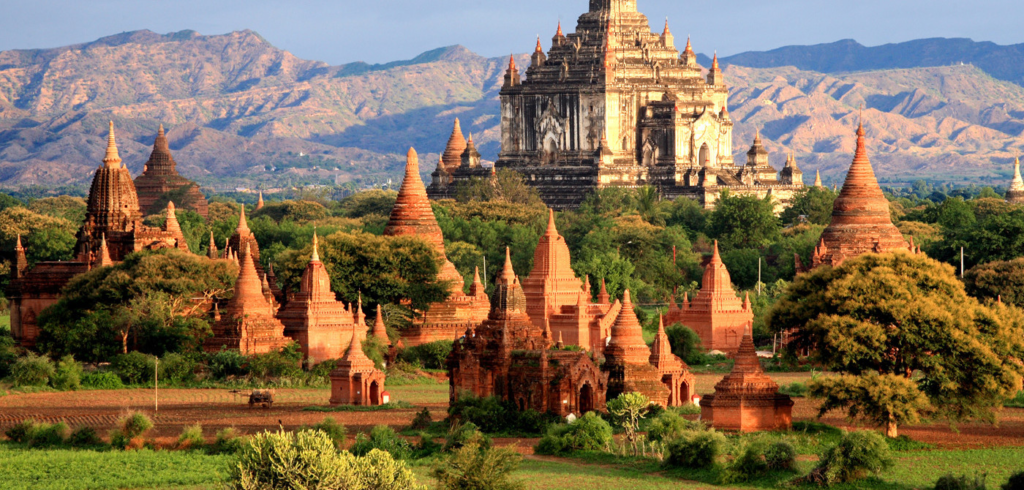
Bagan, an ancient city located in the Mandalay Region, is one of Myanmar’s most iconic and awe-inspiring destinations. Home to over 2,000 well-preserved temples and pagodas, Bagan’s landscape is dotted with the remnants of a once-thriving kingdom. Visitors can explore the majestic Ananda Temple, the intricately designed Shwezigon Pagoda, and the towering Dhammayangyi Temple. A hot air balloon ride over Bagan at sunrise offers a breathtaking view of the temple-studded plains, creating an unforgettable experience.
2. Yangon

Yangon, Myanmar’s largest city and former capital, is a vibrant metropolis that seamlessly blends colonial architecture with modern developments. The city’s most famous landmark, the Shwedagon Pagoda, stands as a symbol of Myanmar’s rich Buddhist heritage. This golden stupa, believed to be over 2,500 years old, attracts pilgrims and tourists alike. Yangon is also home to the bustling Bogyoke Aung San Market, where visitors can shop for traditional crafts, gemstones, and local delicacies. The serene Kandawgyi Lake and the colorful streets of Chinatown add to Yangon’s charm.
3. Inle Lake
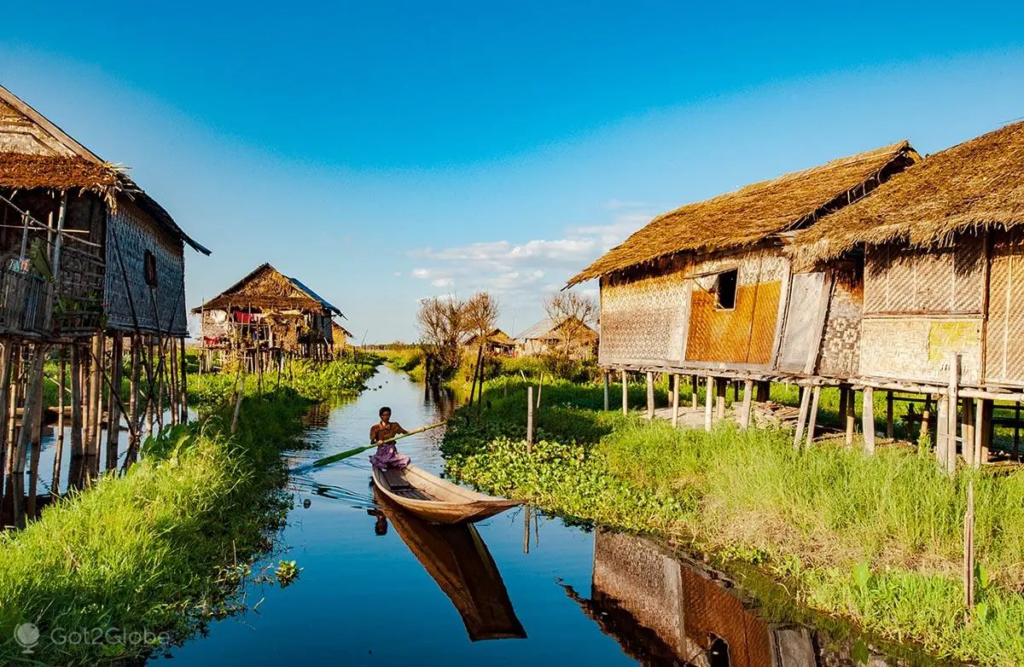
Nestled in the Shan State, Inle Lake is a tranquil freshwater lake surrounded by picturesque hills and floating villages. The unique leg-rowing fishermen of Inle Lake are a sight to behold, demonstrating a traditional fishing technique that has been passed down through generations. Visitors can explore the floating gardens, visit local markets, and admire the intricate craftsmanship of the Inle silk weavers. The Phaung Daw Oo Pagoda, a significant religious site, and the ancient ruins of Indein are also worth exploring.
4. Mandalay

Mandalay, the cultural and religious heart of Myanmar, is a city steeped in history and tradition. The Mandalay Palace, the last royal palace of the Burmese monarchy, offers a glimpse into the country’s regal past. Mandalay Hill provides panoramic views of the city and is a popular spot for watching the sunset. The city is also home to the revered Mahamuni Buddha Temple, the intricately carved Shwenandaw Monastery, and the peaceful Kuthodaw Pagoda, known as the world’s largest book due to its 729 marble slabs inscribed with Buddhist scriptures.
5. Ngapali Beach

For those seeking relaxation and natural beauty, Ngapali Beach is a must-visit destination. Located on the Bay of Bengal, this pristine beach is known for its soft white sands, crystal-clear waters, and swaying palm trees. Ngapali Beach offers a range of activities, including snorkeling, diving, and boat trips to nearby islands. The tranquil ambiance and luxurious beachfront resorts make it an ideal getaway for travelers looking to unwind and enjoy the coastal beauty of Myanmar.
6. Hpa-An

Hpa-An, the capital of Kayin State, is a picturesque town surrounded by stunning limestone karst mountains. The town is famous for its natural caves and religious sites, such as the Kawgun Cave, which houses thousands of Buddha images and carvings, and the Saddan Cave, a massive cavern with an underground lake. The tranquil Kyauk Ka Lat Pagoda, perched on a limestone rock in the middle of a lake, and the panoramic views from Mount Zwekabin are also highlights of Hpa-An.
7. Kyaiktiyo Pagoda (Golden Rock)
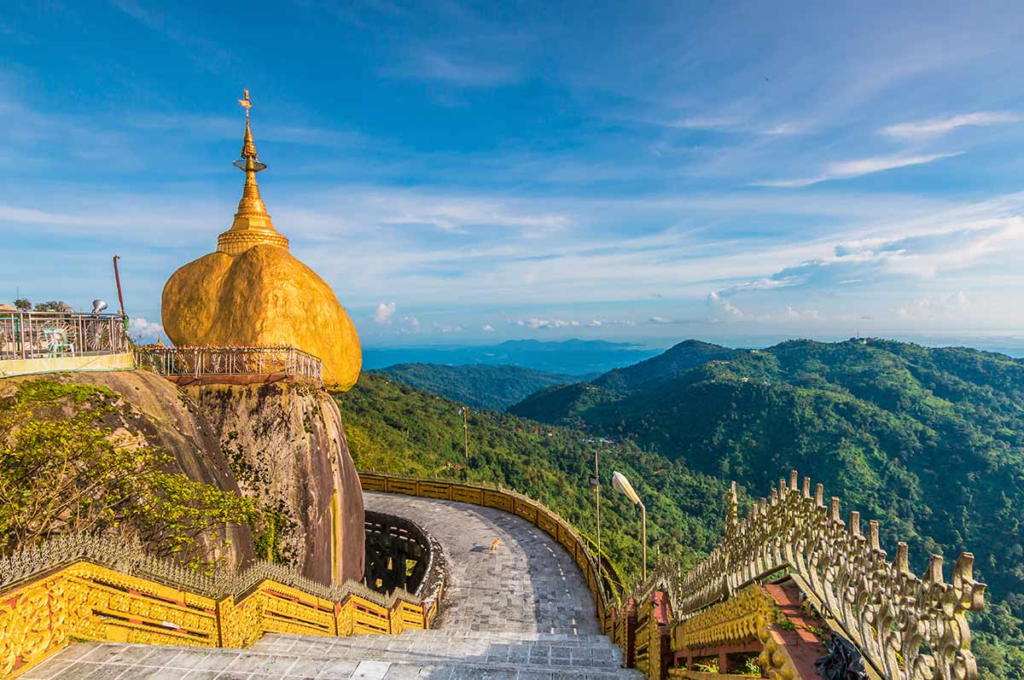
The Kyaiktiyo Pagoda, commonly known as the Golden Rock, is one of Myanmar’s most revered pilgrimage sites. Perched precariously on the edge of a cliff, this massive golden boulder is topped with a small pagoda and is believed to be held in place by a strand of the Buddha’s hair. The journey to the Golden Rock involves a scenic hike or a thrilling truck ride up the mountain, offering spectacular views of the surrounding landscape. The site is especially enchanting at sunrise and sunset, when the rock glows with a magical golden hue.
8. Mrauk U

Mrauk U, an ancient city in the Rakhine State, is often compared to Bagan for its archaeological significance. This former capital of the Mrauk U Kingdom is home to numerous temples and pagodas, many of which are nestled amid lush greenery and rolling hills. The Shittaung Temple, known for its intricate stone carvings and labyrinthine passages, and the Htukkanthein Temple, with its fortress-like appearance, are among the most notable structures. Mrauk U offers a more off-the-beaten-path experience, allowing visitors to explore its historical treasures in relative solitude.
9. Bago

Bago, a city with a rich historical and cultural heritage, is located just a few hours’ drive from Yangon. The Shwemawdaw Pagoda, often referred to as the Golden God Temple, is one of the tallest pagodas in Myanmar and a significant religious site. The Shwethalyaung Buddha, a colossal reclining Buddha statue, and the Kyaik Pun Pagoda, known for its four towering Buddha images, are also key attractions. Bago’s ancient monasteries, bustling markets, and traditional pottery workshops offer a glimpse into the city’s vibrant local life.
10. Putao

For adventure enthusiasts and nature lovers, Putao in the far north of Myanmar offers an unparalleled experience. This remote town is the gateway to the eastern Himalayas and is surrounded by snow-capped peaks, pristine rivers, and dense forests. Putao is a haven for trekking, mountaineering, and wildlife spotting, with opportunities to encounter rare species such as the red panda and the black orchid. The breathtaking landscapes and the warm hospitality of the local ethnic communities make Putao a truly unique destination in Myanmar.
Myanmar’s diverse landscapes, rich cultural heritage, and warm hospitality make it a captivating destination for travelers. Whether you’re exploring ancient temples, relaxing on pristine beaches, or embarking on an adventurous trek, Myanmar offers a wealth of experiences that will leave a lasting impression. These top ten must-visit destinations showcase the beauty and charm of Myanmar, inviting you to discover the wonders of this enchanting country.
Natural Wonders and Biodiversity
Myanmar’s natural beauty is as diverse as its cultural heritage. The country’s varied landscapes range from pristine beaches to dense forests and towering mountain ranges. Inle Lake, located in the Shan State, is a serene freshwater lake known for its floating villages and unique leg-rowing fishermen. The lake’s tranquil waters and surrounding hills create a picturesque setting that attracts travelers seeking a peaceful retreat.
The Irrawaddy River, Myanmar’s longest river, flows through the heart of the country, offering a lifeline to the communities along its banks. River cruises along the Irrawaddy provide a unique perspective of Myanmar’s countryside, with stops at traditional villages, ancient temples, and bustling markets.
Myanmar is also home to several national parks and wildlife sanctuaries that protect its rich biodiversity. The Hkakabo Razi National Park in the far north is known for its snow-capped peaks and diverse flora and fauna, while the Alaungdaw Kathapa National Park in the Sagaing Region is a sanctuary for elephants and other wildlife.
The Spirit of Myanmar’s People
The warmth and hospitality of the Myanmar people leave a lasting impression on visitors. Despite the country’s complex political history and economic challenges, the Burmese people are known for their resilience, kindness, and strong sense of community. Traditional festivals, such as Thingyan (the Burmese New Year water festival) and Thadingyut (the Festival of Lights), provide opportunities for locals and visitors alike to come together and celebrate the rich cultural heritage of the country.
Culinary Delights
Myanmar’s cuisine is a delightful blend of flavors influenced by its neighboring countries and diverse ethnic groups. Traditional dishes often feature rice, noodles, and a variety of vegetables, meats, and seafood. Mohinga, a rice noodle soup with fish broth, is considered the national dish and is commonly enjoyed for breakfast. Other popular dishes include Shan noodles, tea leaf salad (lahpet thoke), and curry dishes served with an array of side dishes.
Tea houses play a significant role in Myanmar’s social life, serving as gathering places for friends and families to enjoy tea, snacks, and lively conversation. The unique Burmese tea, often brewed with condensed milk, has a distinct flavor that reflects the country’s tea culture.
Top Eight Most Famous Food of Myanmar





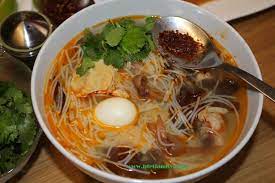

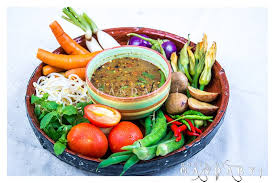
Challenges and Resilience
Myanmar’s journey has not been without challenges. The country has faced political turmoil, ethnic conflicts, and economic hardships over the years. However, the resilience and determination of the Burmese people have been instrumental in navigating these difficulties. Recent efforts toward political reforms and economic development have shown promise, but the path to lasting peace and prosperity remains complex.
A Land of Opportunities
Despite its challenges, Myanmar is a land of opportunities. The country’s rich cultural heritage, natural beauty, and untapped potential make it an attractive destination for travelers, investors, and adventurers. Efforts to promote sustainable tourism, preserve cultural sites, and protect the environment are crucial for ensuring that future generations can continue to appreciate Myanmar’s unique charm.
Conclusion
Myanmar, with its golden pagodas, lush landscapes, and vibrant culture, is a country that captivates the heart and soul. Its rich history, diverse traditions, and warm hospitality create an unforgettable experience for those who venture into its embrace. As Myanmar continues to navigate its path toward a brighter future, the spirit of its people and the beauty of its land remain constant sources of inspiration and wonder.

